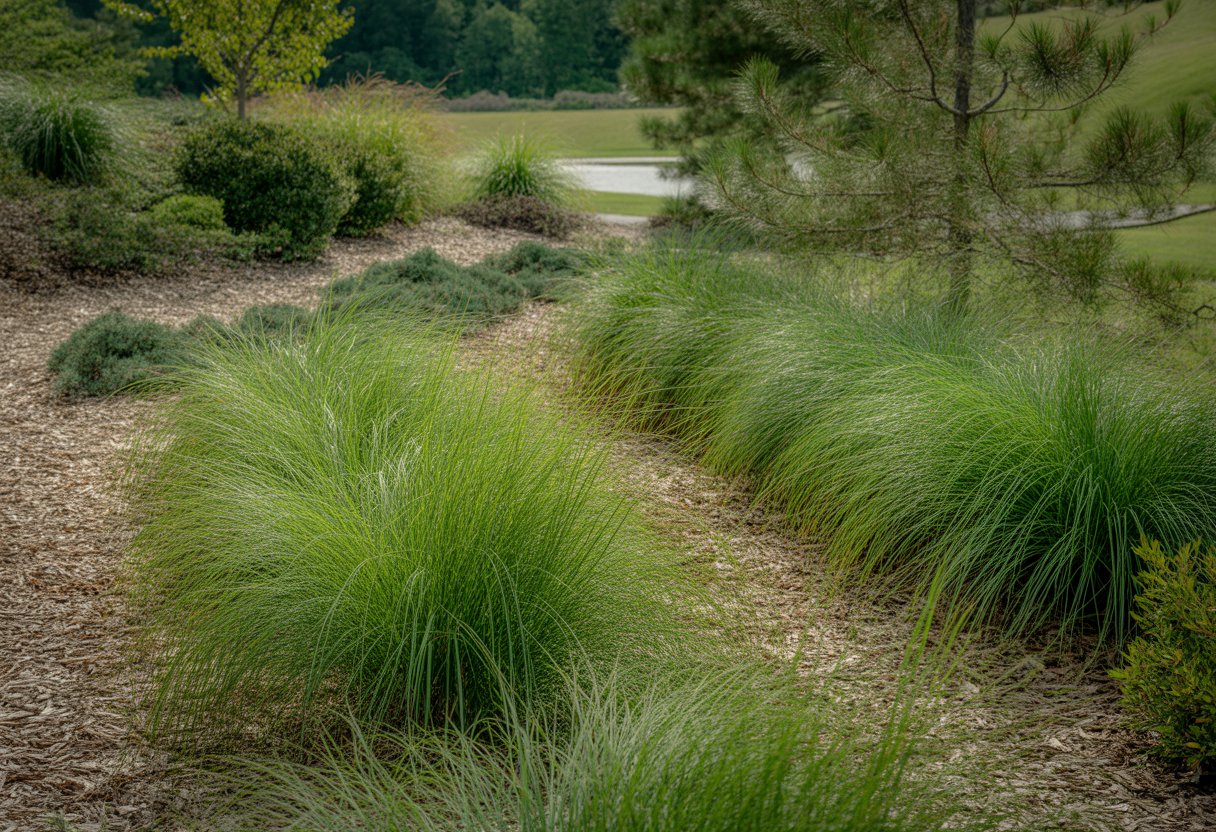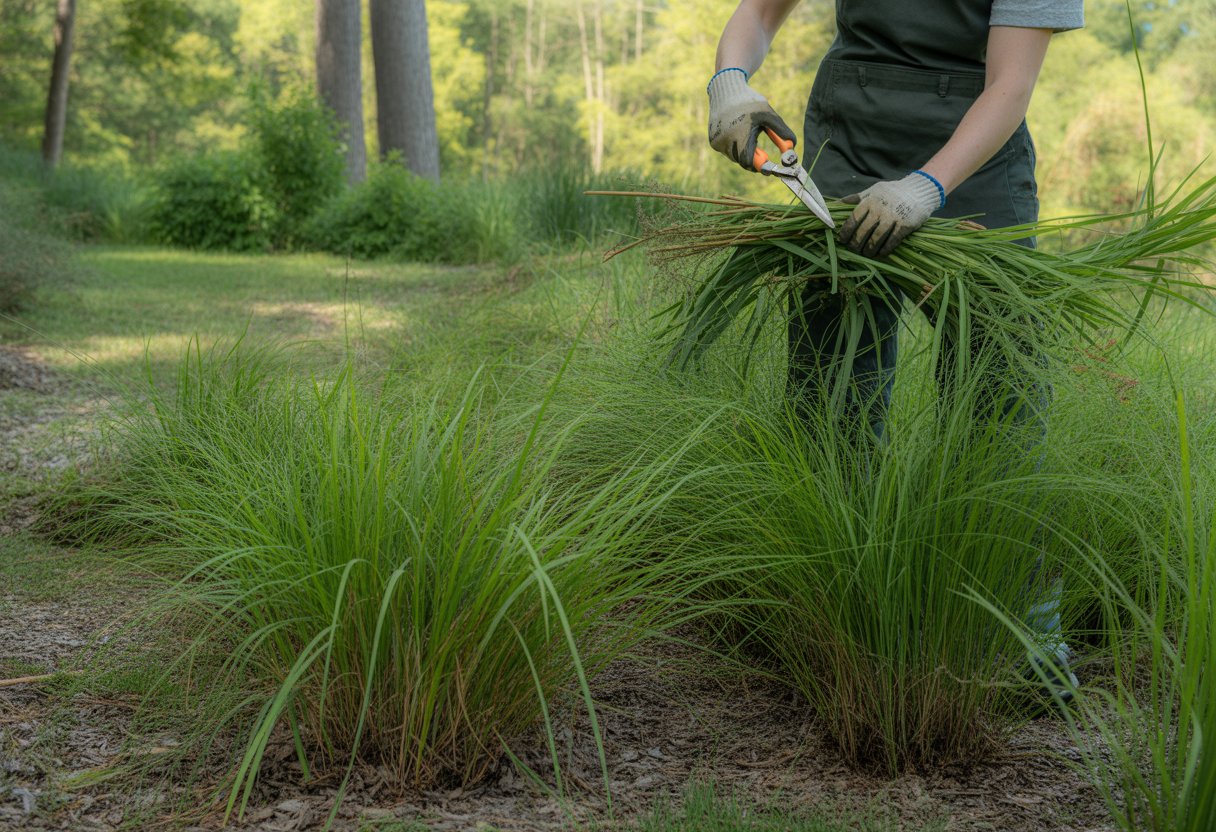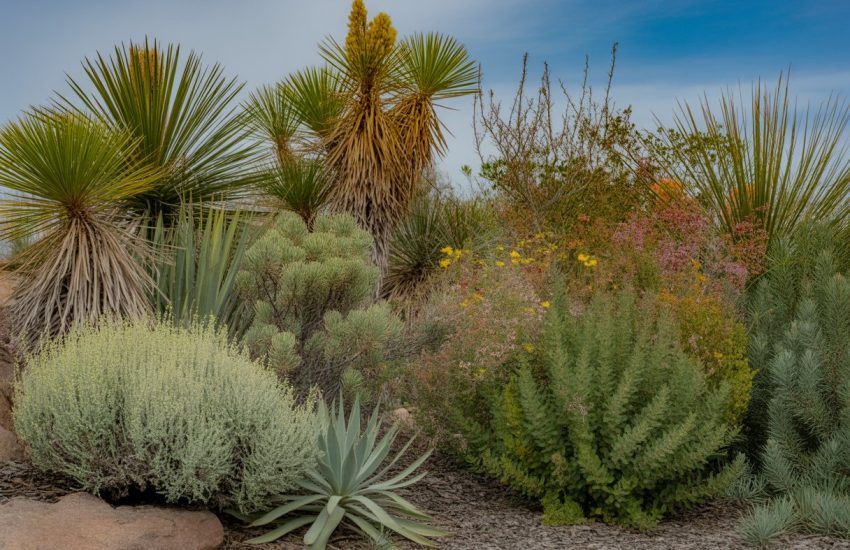Landscaping with Native Sedges in North Carolina: Sustainable Design and Maintenance Guide
Landscaping with native sedges in North Carolina? It’s a practical, sustainable way to give outdoor spaces some real character. These plants know the local climate and soil inside out, so they’re about as low-maintenance as it gets for gardeners here.
Native sedges help control erosion, support local wildlife, and honestly, they thrive with less water and fertilizer than a lot of non-native options.

They fit into all sorts of landscape styles, from buttoned-up formal gardens to wild, naturalized corners. Sedges bring a mix of textures and colors that stand out, and you barely have to fuss over them.
When you pick native sedges, you’re supporting the region’s ecological health. They help preserve local plant diversity and give native insects and birds a place to call home.
Benefits of Landscaping With Native Sedges
Native sedges pull their weight in North Carolina landscapes. They give local ecosystems a boost, add textures you just don’t get from regular grasses, and make life easier thanks to their adaptability.
Ecological Value
Native sedges matter for local wildlife. Foraging birds love their seeds, and plenty of creatures use the dense foliage for shelter when the weather turns rough.
They keep things balanced for pollinators, too, even if not directly. Unlike some invasive grasses, sedges play nice with the soil and water, keeping biodiversity in check.
Their roots dig deep, holding soil in place and cutting down on erosion, especially in soggy spots.
Aesthetic Appeal
Sedges bring something different to the table, visually. Their fine, sometimes triangular leaves look great next to broadleaf perennials, adding layers and movement to garden beds.
Their green shifts to bronze, gold, or even red in the fall, so you get color changes as the seasons roll by. Even in winter, they hold onto some structure and color—something you can’t say for most grasses.
Since they grow in clumps, you can use them as groundcovers, borders, or just to soften up the edges of walkways. They won’t take over, but they’ll definitely make an impact.
Low Maintenance Advantages
Once they settle in, native sedges barely need watering. They’re built for North Carolina’s ups and downs, handling both wet and dry spells better than a lot of ornamental grasses.
Pests and diseases? Not much of an issue here, so you can skip the chemicals. Their slow, steady growth means you won’t spend weekends mowing or pruning.
They’re perennials, so they return every year without any replanting. That means less work and more time to enjoy your yard.
Choosing the Right Native Sedges for North Carolina Landscapes
Native sedges come in all shapes and sizes, each with their own preferences for soil and sun. If you match the species to the site, you’ll spend less time on upkeep and do more good for the local ecosystem.
Popular Native Sedges
Carex pensylvanica, or Pennsylvania sedge, loves dry, shady spots. It forms dense, low mats and is impressively drought-tolerant, thriving under trees—perfect for woodland gardens.
If your yard has wetter areas, Carex radiata and Carex vulpinoidea are better picks. They handle rain gardens and stream banks, even putting up with the occasional flood.
Many sedges are evergreen or semi-evergreen, so you get texture all year. They rarely need mowing, pests mostly leave them alone, and wildlife appreciates the habitat.
Complementary Plants and Grasses
Pair sedges with other perennials and grasses for that layered, full look. Fine-textured grasses like Schizachyrium scoparium (little bluestem) complement sedges without overshadowing them.
Add wildflowers such as Echinacea purpurea or Rudbeckia hirta for pops of color and pollinator support. Broadleaf perennials and native vines can fill in gaps, both vertically and horizontally.
Rushes work well in wetter spots if you want a little more structure. Mixing the right plants helps with soil stability and keeps things interesting through the seasons.
Design Strategies and Implementation

Native sedges are flexible. They help out local wildlife, give you privacy, and make your landscape more sustainable—all while handling North Carolina’s quirks.
Creating Wildlife-Friendly Gardens
Planting Carex species draws in pollinators and birds. Sedges offer up nectar and seeds, plus shelter for all sorts of small critters.
A mix of sedges in damp, shady spots brings in even more wildlife. Carex pensylvanica is a favorite for ground-nesting pollinators. Skip the pesticides if you want to keep things buzzing and chirping.
Mixing native sedges with flowering plants makes the habitat more complex. That usually means better pollination and more bird activity. Mulch lightly around sedges to keep the soil moist without messing with helpful insects.
Privacy and Screening Solutions
Sedges can make surprisingly good privacy screens. Their clumps grow dense enough to block views, but they don’t overwhelm like big shrubs or trees. Carex muskingumensis gets tall enough for low to medium screening.
Plant them along property lines or paths for a bit of separation. Since many stay green through winter, you get year-round coverage.
They handle shade and damp soil, so you can tuck them under trees or by water features where other plants struggle. Combine sedges with taller grasses or shrubs if you want a thicker screen or more variety.
Sustainable Landscape Design
Native sedges cut down on watering and fertilizer. Their roots dig deep, holding soil together and helping water soak in, which keeps erosion in check. Carex lacustris is a champ in wet spots and even filters runoff.
Once established, Carex doesn’t need much attention. It adapts to different North Carolina microclimates, making landscapes more resilient.
Rain gardens or bioswales with sedges manage stormwater naturally. They soak up extra water, trap pollutants, and boost biodiversity.
Care and Maintenance of Native Sedges

Native sedges do best when you pay attention to soil moisture, light, and the changing seasons. Watering, soil management, and timing your maintenance really matter. If you’re unsure, plenty of resources can help you pick and care for the right sedges.
Watering and Soil Considerations
Most native sedges like moist, well-drained soil, but some are more flexible. After the first season, many can handle dry spells, but regular water early on helps them dig in.
Soils rich in organic matter give sedges a boost. If your dirt’s sandy or heavy clay, work in some compost for better drainage and texture. Avoid soggy spots unless you’re planting something like Carex amphibola, which loves it wet.
Mulch helps keep moisture in and soil temps steady. Lay down two or three inches of organic mulch, but don’t pile it right up against the plant crowns—nobody wants rot.
Seasonal Care Routine
Sedges usually go dormant in winter, so you can mostly leave them alone during the cold months. Once spring rolls around, trim back dead growth to encourage fresh leaves and keep things tidy. Clean, sharp tools make the job easier and help prevent disease.
If your soil’s healthy, you probably don’t need fertilizer. If growth seems sluggish, try a balanced, slow-release type in spring, but don’t go overboard. Too much fertilizer can actually reduce the benefits of using natives.
In summer, water a bit more if it’s especially dry. Keep an eye out for pests or disease, though sedges are pretty tough and rarely give you trouble.
Resources for Further Learning
The North Carolina Native Plant Society has some pretty detailed guides on local sedge species. You’ll also find practical tips for sustainable landscaping right on their website.
They’ve got plant lists and seasonal care advice that can make your life a little easier.
The USDA Plants Database dives into species-specific info, like where each sedge grows best. Their distribution maps come in handy if you’re trying to match plants to your yard’s conditions.
Extension services, especially NC State University’s horticulture program, offer fact sheets and occasional workshops. These resources help gardeners get comfortable with native sedge care and bring more biodiversity to their landscapes.


